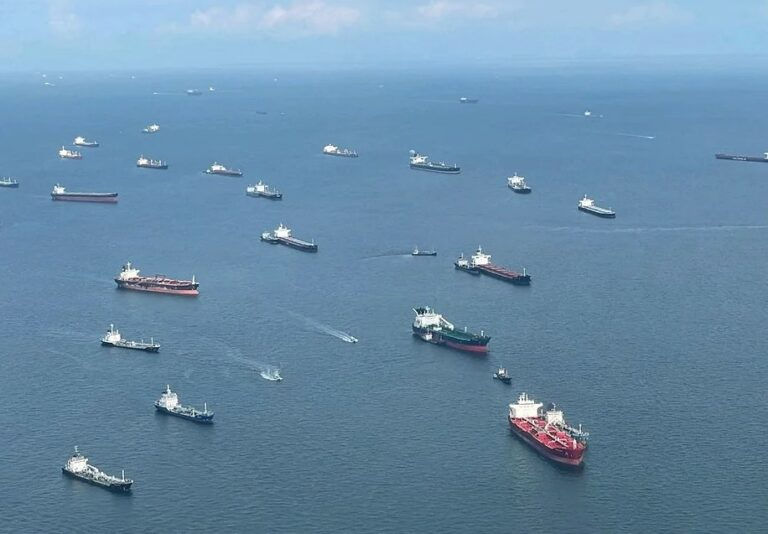GCMD has published its report on Project CAPTURED - On board carbon capture
- Tseles John
- Sep 11
- 3 min read

The Global Centre for Maritime Decarbonisation (GCMD) has published its report on Project CAPTURED, which demonstrated the technical and operational feasibility of integrating maritime carbon capture into an industrial CO2 utilization pathway.
GCMD presented findings from the “world’s first” demonstration of a complete carbon value chain for onboard captured carbon dioxide (CO2). As explained, this is the first of a two-part series, with the second report to cover the life cycle assessment (LCA) of the carbon value chain. That analysis will quantify the greenhouse gas (GHG) impacts of the first maritime-to-industry CO2 utilization pilot.
Completed in China in late June 2025, this pilot involved Evergreen Marine Corp’s Ever Top container vessel capturing CO2 using Shanghai Qiyao Environmental Technology (SMDERI-QET)’s onboard carbon capture and storage (OCCS) system. The captured CO2 was then transferred ship-to-ship to Zhoushan Dejin Shipping’s Dejin 26, followed by a ship-to-truck transfer and subsequent overland transport to Baorong Environmental.
At Baorong, the LCO2 was successfully utilized as feedstock, and together with steel slag, produced low-carbon calcium carbonate and post-carbonated slag.
As informed, Project CAPTURED tracked the quality and quantity of the captured CO2 across the entire value chain through comprehensive sampling and analysis. At all custody transfer points, CO2 consistently exceeded 99.95 vol%, meeting the specifications of the downstream user. Of the 25.44 metric tonnes (MT) of captured CO2 offloaded from the Ever Top, 15.84 MT was delivered to the end-user.
The project also demonstrated safe and controlled operations, with no safety incidents during the trial. This outcome was achieved through a series of rigorous safety measures, including a hazard identification risk assessment covering all stages of LCO2 offloading, from vessel approach and mooring to transfer and disconnection.
The handling, transfer and transport of LCO2 followed procedures adapted from existing liquefied natural gas (LNG) and liquefied petroleum gas (LPG) transfer protocols.
Expanding the list of EU ETS end uses
Under the EU Emissions Trading System (EU ETS), only CO2 that is permanently fixed in products such as construction materials is recognized as “utilization”. At present, this covers carbonated aggregates, cement constituents, and products, such as concrete, bricks and tiles.
This list does not include other products that also achieve permanent carbon fixation. In this pilot, captured CO2 was mineralized into precipitated calcium carbonate (PCC)—a synthetic alternative to conventionally quarried fillers that offers higher purity and tighter control over particle size and morphology.
Although PCC can permanently bind CO2, it is only considered eligible under the EU ETS if used in construction materials. Other applications, such as its use as a functional filler in paper, plastics, and building materials, that demonstrate the chemical permanence of carbon fixation, are not included.
As carbon capture technologies scale and the supply of captured CO2 increases, mineralization pathways, like PCC, could offer additional pathways for carbon utilization.
Expanding the EU ETS list of “eligible end-uses” to include other applications where carbon is also embedded in durable long-lived products could unlock new industrial demand, encourage investment, and accelerate the deployment of carbon capture and utilisation solutions onboard vessels and ashore.
Looking ahead
The successful scaling of the carbon value chain for onboard captured CO2 will hinge on several critical advancements identified by Project CAPTURED. One is to address the regulatory classification of captured CO2 as “hazardous cargo” from “hazardous waste” to enable lawful land transport and broad industrial utilization.
Another focus area is streamlining transfer operations, including aligning tank capacities and transfer volumes as well as enhancing insulation of transfer equipment to reduce CO2 vaporization, installing custody-transfer grade flow meters and inline gas analyzers to monitor CO2 quality, and standardizing safety protocols, including emergency shutdown interfaces and mooring configurations.
Improving the commercial viability of the value chain is also crucial, which can be supported through the co-location of offloading and utilization sites, fostering expanded industrial partnerships, and promoting CO2-derived product markets to increase the commercial drive for carbon capture.
“For OCCS to truly gain traction, what happens downstream is just as important as capturing CO2 onboard. Ships are floating assets that ply the world’s oceans, which makes it vital to harmonise standards and regulations across ports and terminals so that offloading can be carried out safely and at scale. And to unlock economies of scale, maritime CO2 capture must be closely aligned with landside industrial end-use and demand,” Professor Lynn Loo, CEO of GCMD, highlighted.
source: offshore-energy.biz






Comments